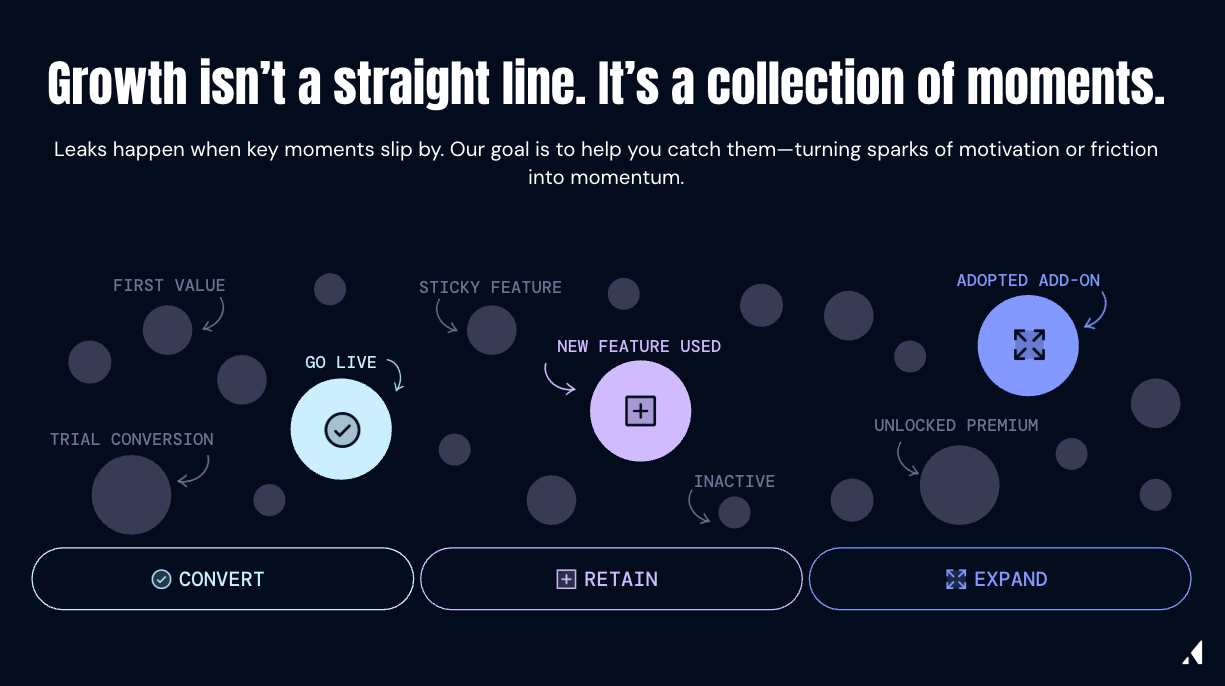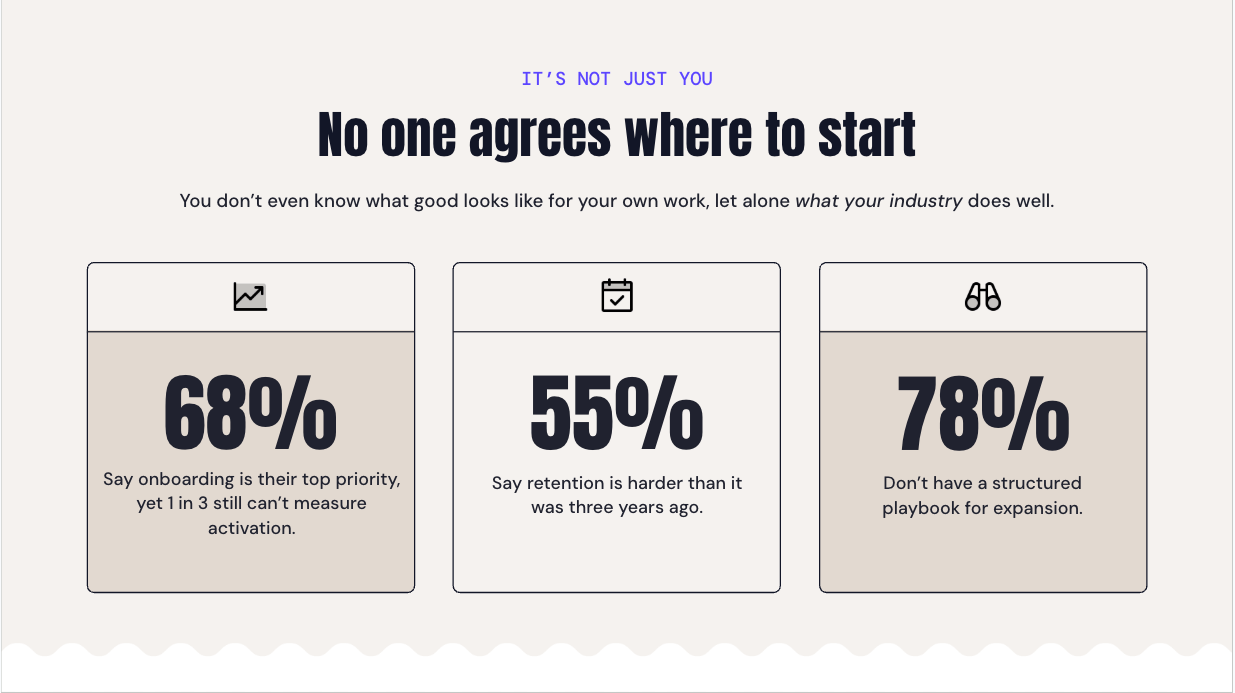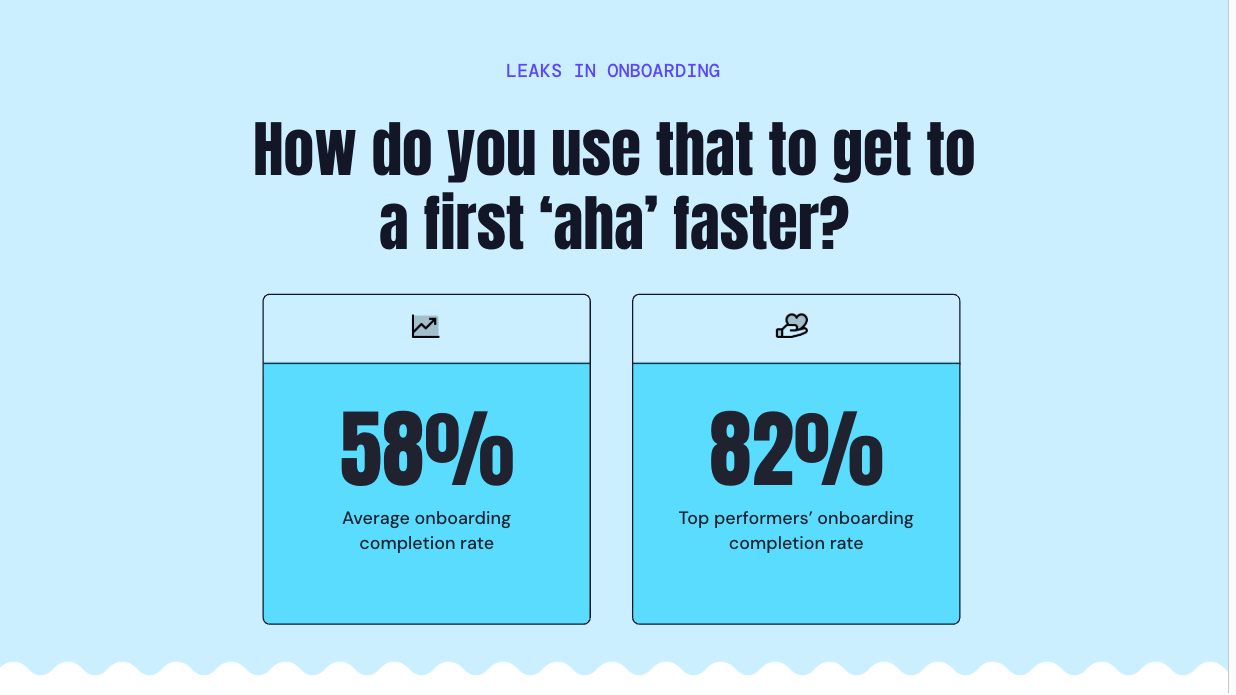The Problem with the “Perfect” Customer Journey

.png)

.png)
Teams often design “perfect” customer journeys that look great on paper but don’t reflect real user behavior. This piece breaks down why journeys are nonlinear, where leaks actually happen, and how to align teams around the moments that truly drive adoption and growth.
Most teams know there are leaks in their customer journey, somewhere between:
But the real issue isn’t poor execution; it goes deeper than that. The real issue, the one that keeps us up at night, is how you build strategies around neat, linear lifecycle maps that don’t reflect how people actually use your product.
Real customer journeys are nonlinear. People explore, drop off, come back, find value, leave again, and rediscover it later. The path to product adoption isn’t just a funnel. It’s a loop of moments that matter.

We recently hosted a live panel on how to plug the leaks in your customer lifecycle, featuring experts from North One, Breezeway, and DelightPath. Together, we unpacked what it takes to move from a linear customer journey to one built around magic moments: the instant your users experience true product value.

Magic moments are those “aha” moments when a user gets the payoff they came for (or one they didn’t expect). They’re what your most successful customers do consistently… and what every team wishes they could scale to improve NRR, activation, and product adoption.
We wrote out our key takeaways from the discussion and distilled it into a quick-read cheat sheet you can flip through in minutes.
Key takeaway: Everyone’s struggling to identify and operationalize “value moments” across the customer journey.

You can’t embark on customer journey personalization (or improve product adoption) without truly understanding who this is all for.
Your customers are complex humans, not just job titles or segments.
Best practices for customer journey personalization:
Take Breezeway, for example. Their product serves 25+ personas, from tech-savvy project managers to on-site cleaners with limited digital experience.
Their success comes from:
Example: Tailoring contextual onboarding experiences for mobile vs. desktop users based on daily context, a key driver of product adoption.
Interested in the live panel? Watch it now!
High-growth teams redefine personalized onboarding around moments of value, not time-based steps.
They use a reverse journey map to:
Alignment tips:
Result: A more cohesive experience that accelerates product adoption and measurable impact on user activation.

Common pitfalls:
Fix it by:
Pro tip: Blending automation with human touchpoints (calls, live webinars, in-app support) is the winning combo.
As Courtney Sembler (HubSpot) put it: onboarding never ends.
Your users evolve — new goals, new roles, new challenges. Continuous engagement keeps them moving forward.
Everboarding strategies:
Expansion happens at the intersection of emotion and timing.
Act on highs: celebrate milestones, wins, and “aha” moments, then guide users to the next value.
Act on lows: anticipate frustration and support proactively.
Try these frameworks:

Use our free Miro template to map your nonlinear journey, identify leaks, and design for the moments that matter most.